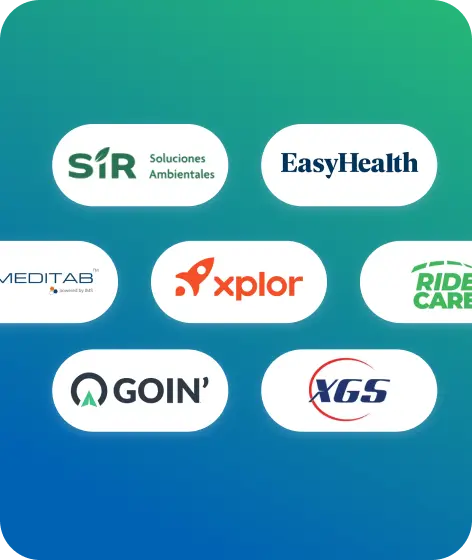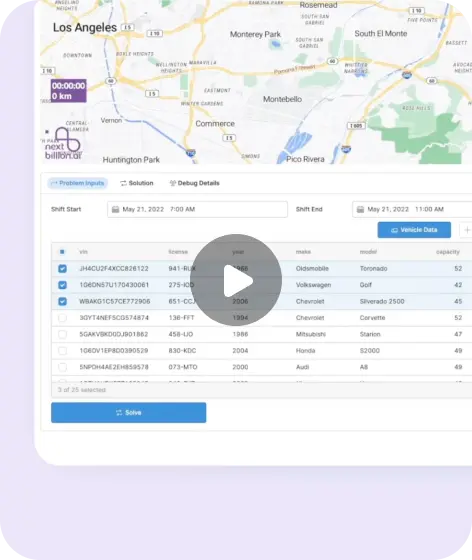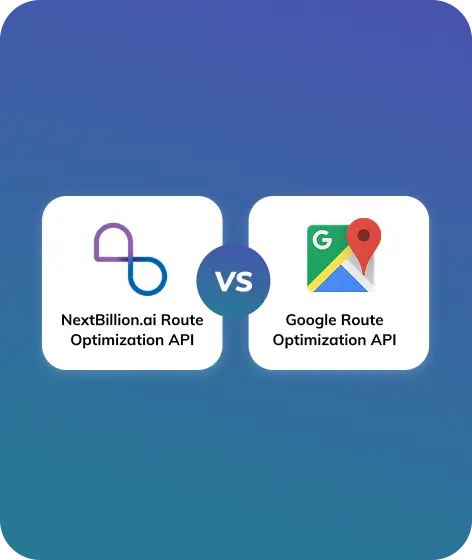FEATURED BLOG
October 1, 2025
2 mins ReadVelocitor Solutions Completes Full Acquisition of NextBillion.ai
Charlotte, NC – 1 Oct 2025 – Velocitor Solutions, a leader in enterprise technology innovation, today announced that its ownership …
Velocitor Solutions Completes Full Acquisition of NextBillion.ai Read More »
September 30, 2025
5 mins ReadNextBillion.ai Product Updates — Q3 2025
At NextBillion.ai, every quarter is a chance to redefine what’s possible with location technology and innovation. Q3 has been no …
September 11, 2025
4 mins ReadNextBillion.ai Launches MCP Server for AI Agents and LLMs
The past few years have unlocked AI’s true potential, transforming it from a mere concept into a catalyst for technological …
NextBillion.ai Launches MCP Server for AI Agents and LLMs Read More »
September 8, 2025
6 mins ReadNextBillion.ai’s Growth Journey: Building Brand Through Tech Innovation and Impact
The location tech industry has become more intensive and focused than ever, demanding platforms that can scale with complexity. Since …
NextBillion.ai’s Growth Journey: Building Brand Through Tech Innovation and Impact Read More »
August 5, 2025
7 mins ReadWhy NextBillion.ai Is Easier to Use Than You Think (2025)
Early adopters loved the raw power of NextBillion.ai’s constraint-based routing APIs, but also flagged gaps such as sparse docs, small …
Why NextBillion.ai Is Easier to Use Than You Think (2025) Read More »
June 25, 2025
2 mins ReadNextBillion.ai partners with TomTom Orbis Maps to deliver enhanced enterprise-grade solutions globally
NextBillion.ai, a leading provider of AI-powered mapping solutions for enterprise, and TomTom (TOM2), the location technology specialist, today announced an …
August 3, 2025
4 mins ReadAnnouncing the All-New NextBillion.ai Routing & Dispatch App
“Adaptability is about the powerful difference between adapting to cope and adapting to win.” – Max McKeown At NextBillion.ai, continuous …
Announcing the All-New NextBillion.ai Routing & Dispatch App Read More »
May 21, 2025
3 mins ReadNextBillion.ai Partners with MapUp to Transform Toll-Aware Routing for Fleets
NextBillion.ai integrates MapUp’s TollTallyⓇ into its routing platform, giving fleets real-time toll visibility, smarter cost planning, and seamless reimbursements. The …
NextBillion.ai Partners with MapUp to Transform Toll-Aware Routing for Fleets Read More »
May 9, 2025
5 mins ReadIntroducing the Driver Assignment API: Enabling Intelligent and Scalable Task Allocation
Introducing the Driver Assignment API: Enabling Intelligent and Scalable Task Allocation Fleet productivity and operational efficiency are at the core …
Introducing the Driver Assignment API: Enabling Intelligent and Scalable Task Allocation Read More »
March 16, 2025
3 mins ReadField Service Excellence: Integrate NextBillion.ai’s Route Optimization API With Salesforce Field Service
If you’re using the Salesforce Field Service solution, you already know how effective it is at doing everything you’d expect …
April 3, 2024
2 mins ReadMastering Soft Constraints in Route Optimization API – NextBillion.ai
Introduction Hello! Route optimization isn’t just about finding the shortest path; it’s about adapting to real-world variables. That’s where “Soft …
Mastering Soft Constraints in Route Optimization API – NextBillion.ai Read More »
July 24, 2024
7 mins ReadUnlock Fleet Efficiency: Samsara Telematics and NextBillion.ai Integration Guide
In the ever-evolving world of fleet management, businesses seek solutions that can keep their operations running smoothly, efficiently and cost-effectively. …
Unlock Fleet Efficiency: Samsara Telematics and NextBillion.ai Integration Guide Read More »
August 1, 2024
3 mins ReadEnhance Samsara Vehicle Telematics With NextBillion.ai’s Route Optimization API
Samsara API users, rejoice! Fleet management was already a breeze with the tracking, monitoring and insights from Samsara’s excellent Vehicle …
Enhance Samsara Vehicle Telematics With NextBillion.ai’s Route Optimization API Read More »
October 22, 2024
9 mins ReadHow to Implement Route Optimization API for Vehicle Fleet Management
Introduction The efficient handling of vehicle fleets has become more important than ever in the field of modern logistics. Businesses …
How to Implement Route Optimization API for Vehicle Fleet Management Read More »
March 12, 2025
9 mins ReadOptimizing Routes in Field Service Management Software using NodeJS
In today’s fast-paced business environment, field service management software plays a crucial role in ensuring smooth operations for businesses that …
Optimizing Routes in Field Service Management Software using NodeJS Read More »
March 16, 2025
12 mins ReadImproving Field Technician Efficiency: Automating Dispatching with NextBillion.ai’s Geofence API
Geofencing is a location-based technology that defines virtual boundaries around real-world geographical areas. These boundaries, known as geofences, can be …
October 29, 2024
12 mins ReadOptimizing Routes in Field Service Management Software using ReactJS
In today’s fast-paced business environment, field service management software plays a crucial role in ensuring smooth operations for businesses that …
Optimizing Routes in Field Service Management Software using ReactJS Read More »
December 27, 2023
3 mins ReadHow To Build a Food Delivery App Like UberEats Using NextBillion.ai
If you plan on building an app similar to, with a mapping component and location-based functions, you should consider using …
How To Build a Food Delivery App Like UberEats Using NextBillion.ai Read More »
September 30, 2025
5 mins ReadNextBillion.ai Product Updates — Q3 2025
At NextBillion.ai, every quarter is a chance to redefine what’s possible with location technology and innovation. Q3 has been no …
August 5, 2025
5 mins ReadNextBillion.ai Product Updates — Q2 2025
We are back with a power-packed roundup of product updates for Q2 2025. This quarter has been nothing short of …
April 10, 2025
5 mins ReadNextBillion.ai Product Updates — Q1 2025
As promised in our last quarterly update, we dedicated Q1 of 2025 to delivering some of the most impactful enhancements …
January 8, 2025
6 mins ReadNextBillion.ai Product Bytes — Q4 2024
As we step into 2025, we’re excited to share the product highlights of our Q4 2024 journey. From launching new …
August 14, 2025
7 mins ReadNextBillion.ai Product Bytes — Q3 2024
In the third quarter of 2024, NextBillion.ai launched new products — Asynchronous Distance Matrix API and Geotab Route Optimization Integration. …
July 31, 2024
7 mins ReadNextBillion.ai Product Bytes — Q2 2024
In the second quarter of 2024, NextBillion.ai made significant advancements in its Route Optimization API, including features like order incompatibility, …
July 26, 2024
7 mins ReadNextBillion.ai Product Bytes — Q1 2024
Buckle up for a recap of the first quarter of 2024 at NextBillion.ai! Discover how our Route Optimization API now …
March 16, 2025
5 mins ReadNextBillion.ai Monthly Product Bytes — December 2023
In our December 2023 product update, we introduced key enhancements to our product offerings. From gaining insights into unassigned tasks …
NextBillion.ai Monthly Product Bytes — December 2023 Read More »
July 27, 2024
4 mins ReadNextBillion.ai Monthly Product Bytes — November 2023
In November 2023, our product portfolio evolved: advanced task sequencing in our Route Optimization API, an intuitive Live Tracking UI …
NextBillion.ai Monthly Product Bytes — November 2023 Read More »





